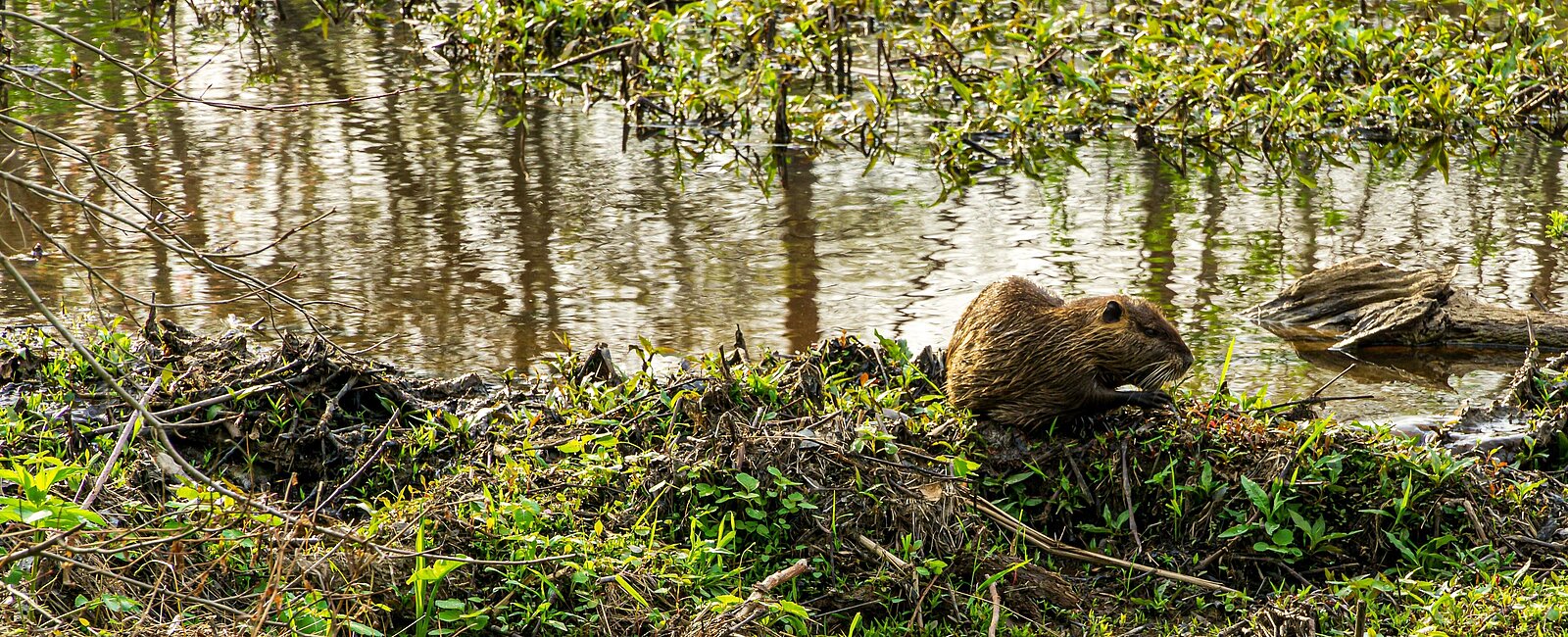
| Project leader: | Dr. Friederike Gethöffer |
|---|---|
| Scientific staff: | Lilja Fromme, Claudia Maistrelli |
| Project erm: | 01.09.2019-01.09.2023 |
| Sponsoring: | EU LIFE, Kofinanzierung durch DJV und Landesjagdverbände |
Project description
In the course of globalisation, alien species are increasingly establishing themselves outside their original area of distribution. Such species are called invasive if they threaten biodiversity in their new habitats or cause economic damage.
In EU Regulation No. 1143/2014 on invasive alien species, measures for the prevention of introduction and management of already established species were defined. Invasive species of EU-wide importance are listed on a Union list: among others, nutria (Myocastor coypus) and muskrat (Ondatra zibethicus) are part of it.
Both species are semi-aquatic mammals that originally came from South or North America and were able to settle in Europe through reintroduction in the 20th century.
Their populations are established throughout Germany and are increasingly spreading to the Netherlands and Belgium. They create burrows on the banks of waterbodies and eat riparian vegetation, crops and mussels.
Their harmful effects can affect rare animal and plant species, hydraulic engineering structures (dikes!) and agricultural land. In particular, the undermining of dikes and bank edges is increasingly causing problems.
The project aims to identify cross-border management strategies and test new methods. This includes, for example:
- Intelligent camera traps using image recognition software that allows automatic selection of shots of nutria and muskrat.
- Intelligent live traps equipped with an image recognition system so that the traps only close on the target species nutria and by-catch of protected species such as otters or beavers is prevented.
- Environmental DNA analysis from water samples to detect the presence of undiscovered nutria or bishop populations.
- DNA mapping, which enables the tracking of migration and immigration routes by genetic analysis of captive animals.
Like all LIFE Projects, there is a multilingual website.
Contact person
University of Veterinary Medicine Hannover, Foundation
Institute for Terrestrial and Aquatic Wildlife Research
Bischofsholer Damm 15
30173 Hannover
Dr. Friederike Gethöffer
Tel.: +49 511 856-7579
E-Mail


